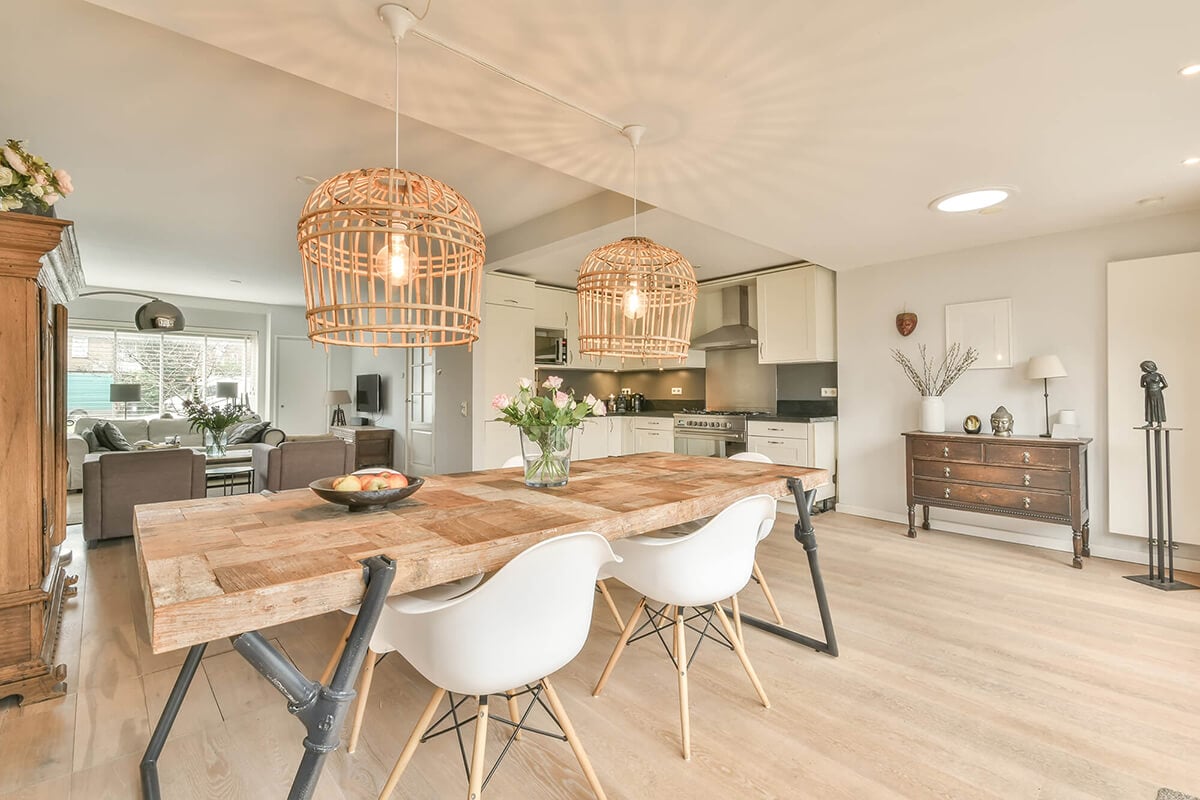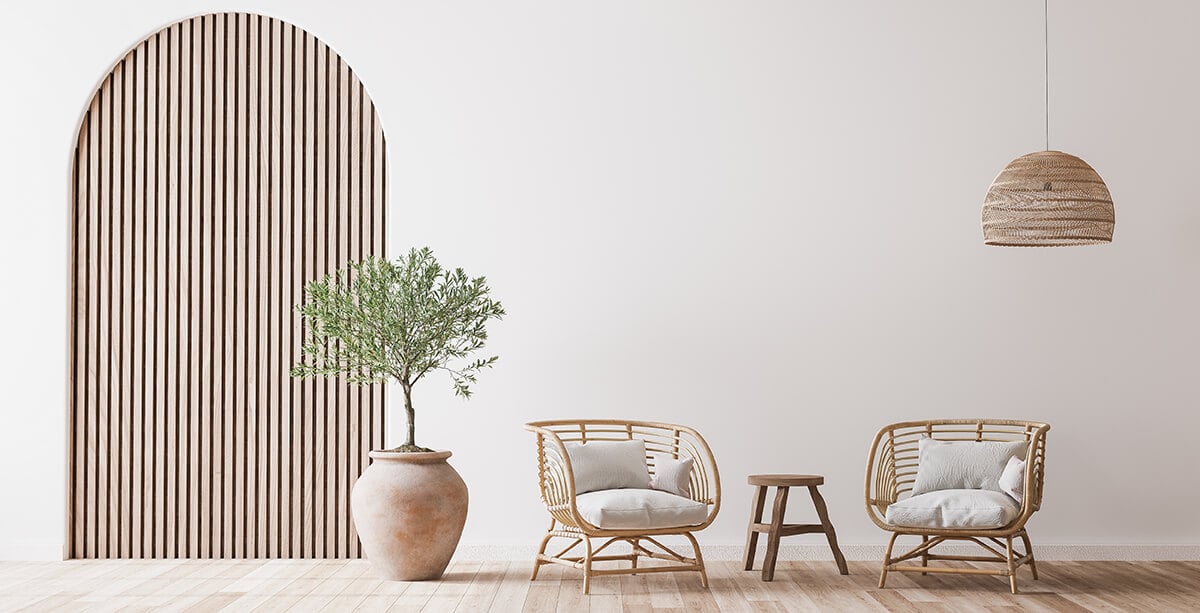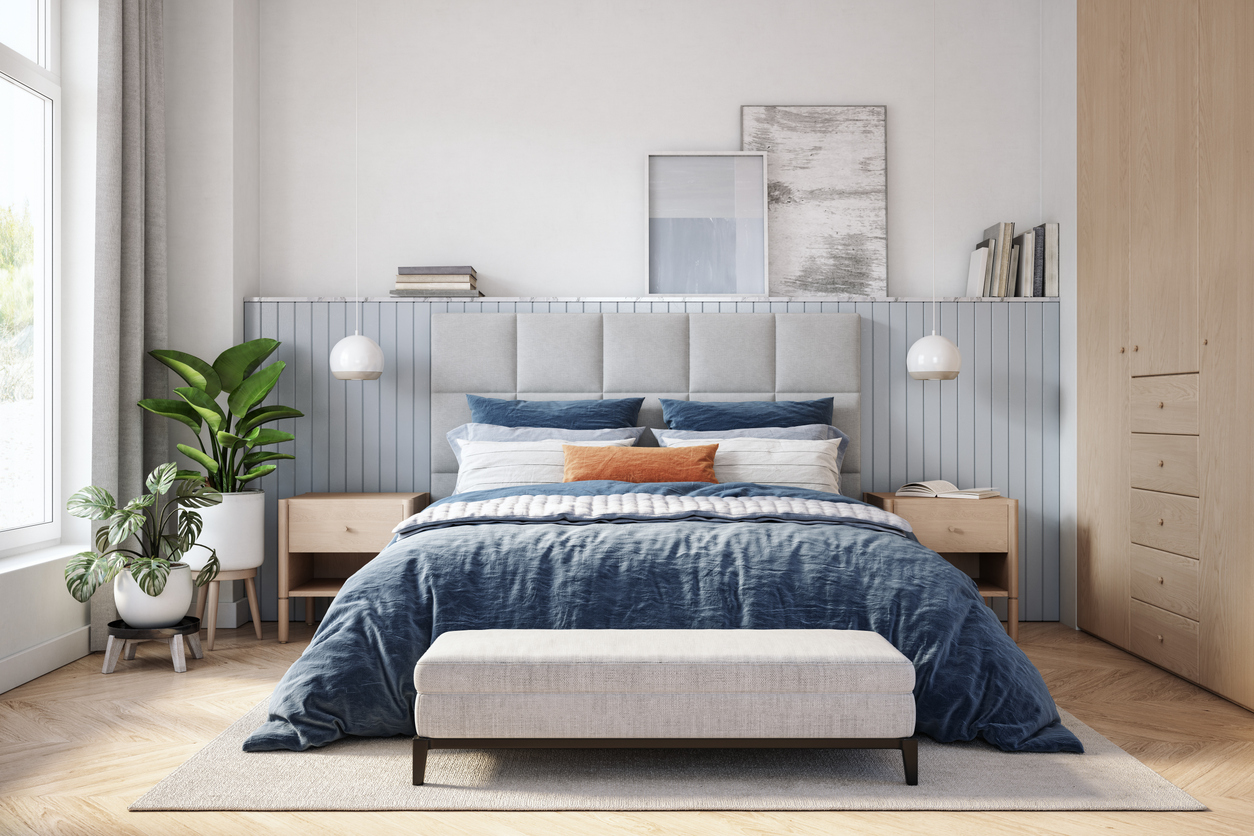We all need sleep, and many of us could use more of it and of higher quality. Light can either disrupt your sleep or help you sleep better. The trick is knowing what kind of light to use in your bedroom and when and where to use it. The following tips will help you layer in proper bedroom lighting, allowing for better mornings, safer nights and hopefully more productive days in between.
2. Bedside Table Lamps
Keep bright light out of your eyes at night by avoiding bedside lamps or pendant lights with clear glass shades or visible bulbs that create glare. Also make sure shades are about equal to your eye level when sitting or leaning in bed.
Recessed downlights above the bed can push intense light directly to your retina and negatively affect sleep cycles, so use them carefully and always on dimmers set to the lowest usable setting.
3. Reading Lights
Reading lights can help you fall asleep to your favorite book. Put them on dimmers and try turning them down as far as you can, as too much light bouncing off the white pages of a book can cause problems.
Consider leaving your tablets, laptops and phones in a different room in your house, since the light they throw off can affect your sleep.
Check out our beginner’s guide to get started on your home project
4. Soft Room Lighting
Soft cove lighting or light bounced off art and feature walls can provide a warm glow ideal for a bedroom. The indirect nature of these solutions will help limit the amount of light entering your eyes.
If you require a ceiling fan in your bedroom, it’s best to avoid those that come with lights. While many ceiling fans feature shades, they often do little to keep you from looking directly into the bulbs — which is just the kind of light that can disrupt circadian rhythms.
5. Nighttime Navigation
In the middle of the night we may need light to navigate, especially if we did a good job darkening our room. The best kind of light for this is well below our eyes and on the floor, like step lights. Lines of light, like those coming from beneath a bed, also give us visual cues to the space that can significantly improve our balance and reduce falls.
6. Bedroom Lighting Layers and Controls
Design bedroom lighting in layers that allow you to change with the time of day. Light can help your space look beautiful, feel comfortable and provide the right light at the right time.
Layer in your bedroom lighting. Bedside lamps, cove lighting, spotlights on art, wall sconces and step lights can all come together to create a beautiful and well-lit room.
Finally, lighting controls such as dimmers and programmable smart systems can make it easier to limit light at night, boost brightness in the morning and set the right mood in between.
Source: https://www.houzz.com/magazine/how-to-light-your-bedroom-right-stsetivw-vs~119621909












1. Let Nature In
Our bodies need darkness at night and brightness in the morning. Blackout shades can block streetlights and car headlights and make it easier to fall asleep, but they can also disconnect us from sunrise.
Consider shades that let in the morning sun, or use smart shade controls that raise them before your scheduled wake-up. You can also use light-based alarm clocks or smart lighting to trick your body if you need to rise before the sun.
Find a lighting designer near you